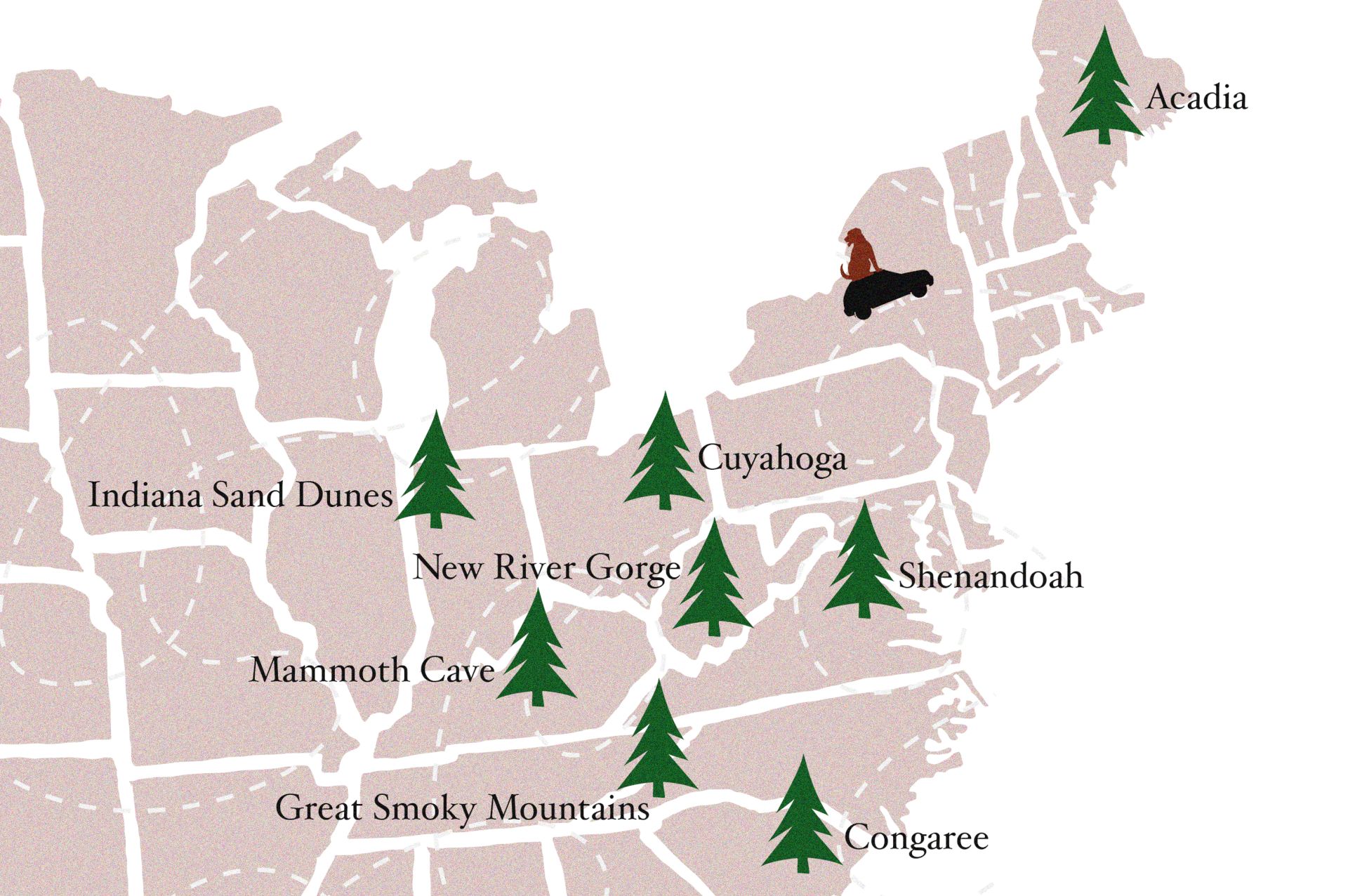I grew up exploring Maine’s Acadia National Park. During the summer, my parents still teach a course on Mount Desert Island, where Acadia is located. Although I had not been to many other national parks, I had watched climate change slowly reshape the landscape I called home over the course of my own so-far brief lifetime.
When the summer of 2023 rolled around, sending smoke to the south from the worst Canadian wildfire season on record, I panicked. With the advent of the East Coast airpocalypse, my timeline to explore all 63 of America’s national parks — which I had once written as a goal on a provisional bucket list — appeared to be shrinking. If I couldn’t so much as venture outside the walls of my apartment, would I ever be able to hike in the wilderness again?
So I enlisted my dog, Blue, and my childhood best friend, Caroline “Caro” Whelley, and together we embarked on a road trip to see eight of the 14 national parks east of the Mississippi. We were two 20-somethings and a 20-pound dog desperate to see America before the Anthropocene stole it from us.
Shenandoah National Park
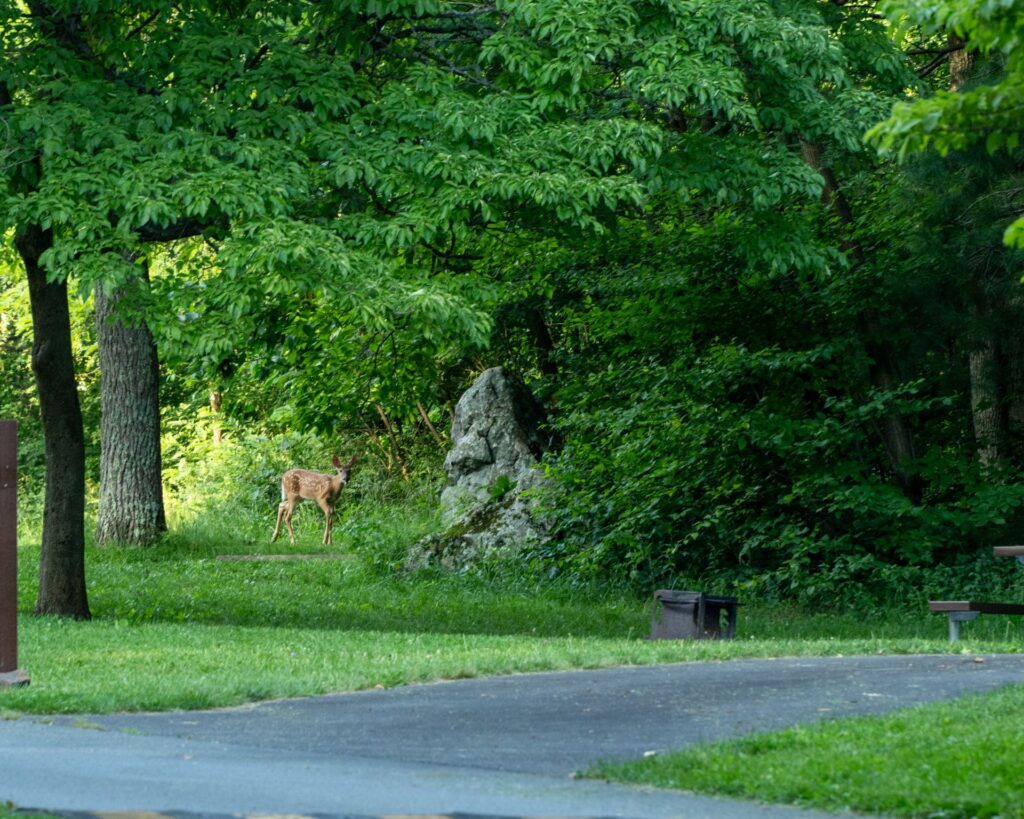
The first day, upon arriving at the Shenandoah National Park in the Blue Ridge section of the Appalachians in Virginia, Caro and I stifled our shrieks — partly from the excitement of being in nature and partly because we were rinsing under ice cold “water-bottle showers” following the day’s hike. Our yelps drew the attention of Jessica Borders, a fellow Gen Zer who was leading an Appalachian Conservation Corps youth crew, who promptly invited me over to talk with the crew.
We sat around bowls of hot ramen as Borders explained that the first crew had mostly been doing trail restoration. It is a constant need, as its lack of switchbacks increases erosion. Later, I noticed a ranger team injecting blue liquid into marked trees around the campground. When I inquired, National Park Service (NPS) intern Summer Smith jumped at the chance to talk about treating ash trees for emerald ash borers, invasive beetles from Asia first identified in this country in Michigan in 2002.
The mysterious blue liquid was pesticide, Smith explained. The trees spread it through the sap.
Though pesticide works well as a short-term solution, Smith was far more excited about the potential for biological control. Virginia Tech, a public research university located in the city of Blacksburg, has been releasing parasitic wasps on public lands around Virginia to try to control the borer. The only known host for the wasp, native to China, is the borer, which makes it an ideal candidate for biological control — at least for now and for as long as it doesn’t evolve to create another unforeseen environmental problem.
A lot is riding on finding a quick solution. Of the nine ash species native to North America, so far only the blue ash has shown natural resistance to the borer, though it has yet to reach the native range of some species. Ash trees are a keystone species with nearly 50 insect species relying exclusively on them at some point in their lifecycle.
The combination of human ingenuity and human carelessness, which has led to the proliferation of endangered species, made me think about our priorities. We don’t ask what the point of art and music is; we viscerally understand that though they don’t serve a utilitarian purpose, they are essential. Yet nature is so often viewed as nothing more than a resource. Extract everything you can. Disregard the rest. Will this stop with my generation?
New River Gorge National Park & Preserve
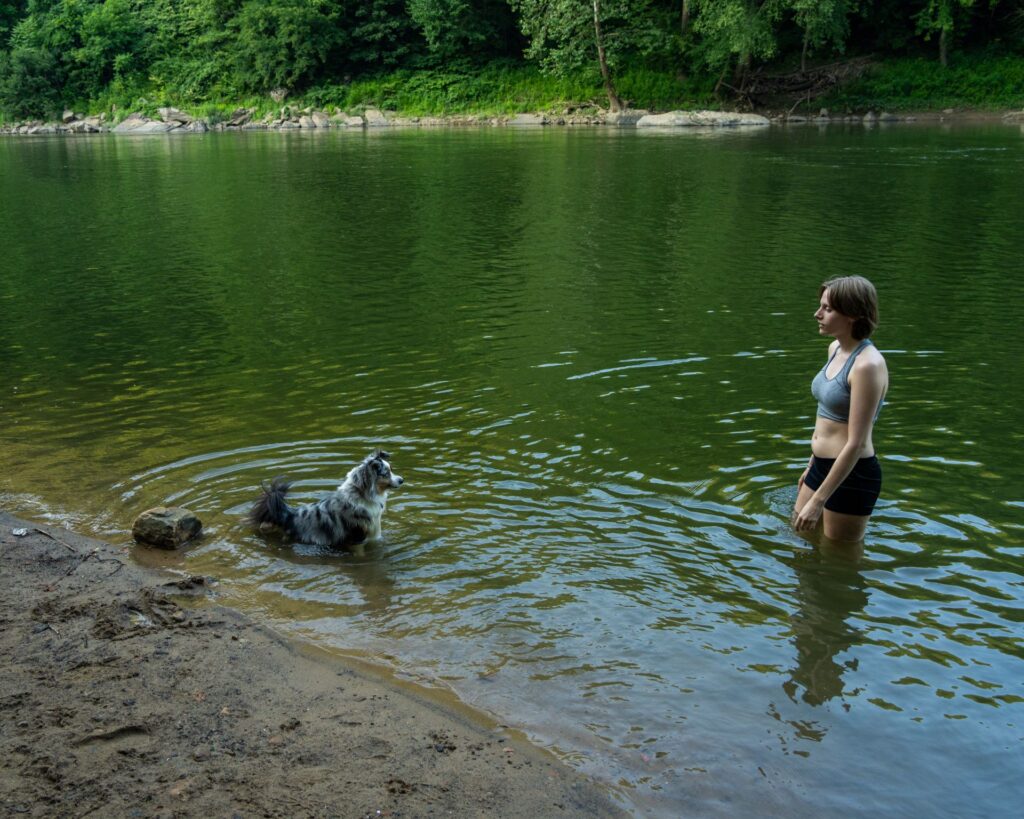
The New River Gorge National Park & Preserve, in southern West Virginia, is the newest national park to be added to the roster of protected reserves in the U.S., upgraded from a national river in December 2020. It showcases what is likely the oldest river in North America, possibly predating the Appalachians and thus as much as 400 million or 500 million years old. Unlike most of the other national parks, where the priority is the conservation and protection of established ecosystems, New River Gorge focuses on protecting and interpreting both the human and natural history of the area for the park’s ballooning number of visitors.
For the past 10,000 years, human use has sculpted the landscape in the park, but none of it compares to the relentless wear of the river.
Wading into the New River felt like standing at the heart of a parable: Only after we reach the brink of destroying an ancient place like this, it seems, can humans learn to appreciate it. And even then, not as a commodity to be extracted but as a place worthy of existing in its own right.
Congaree National Park
Blue, my mini Australian Shepherd, has a long coat that makes her wilt quickly in humid heat. She goes from droopy to disheartened when temperatures rise above 90 degrees Fahrenheit. And it was 102 degrees the day we spent in Congaree National Park, some 30 miles southeast of Columbia, South Carolina.
Though Congaree is generally dog-friendly, some trails don’t permit dogs because of invasive feral pigs, which we saw in droves about a third of the way along the trail. They were rooting through the forest floor, digging up native plants and disturbing the understory.
Feral pigs have been able to thrive in part because they no longer must contend with some of the apex predators of the past. In the 19th and even 20th century, Congaree was one small sliver of a massive old-growth forest. In those days it was home to black bears, cougars and red wolves. Though the occasional black bear may pass through the park, none has taken up permanent residence since before the park was founded. And as for red wolves and cougars, neither has been seen in this part of South Carolina for over a century.
One of Congaree’s most iconic species is the golden silk orb-weaver, an enormous spider famous for its iridescent gold webs. When the light hits the web a certain way, it shimmers like jewelry in the sun.
Great Smoky Mountains National Park
Our experience in the Great Smoky Mountains, a section of the Appalachians that straddles North Carolina and Tennessee, can be summed up in one phrase: beautiful, lush and wet. Our campsite was next to the Little River, so we were glad it didn’t flood and relieved to leave for Kentucky in the morning.
Mammoth Cave National Park
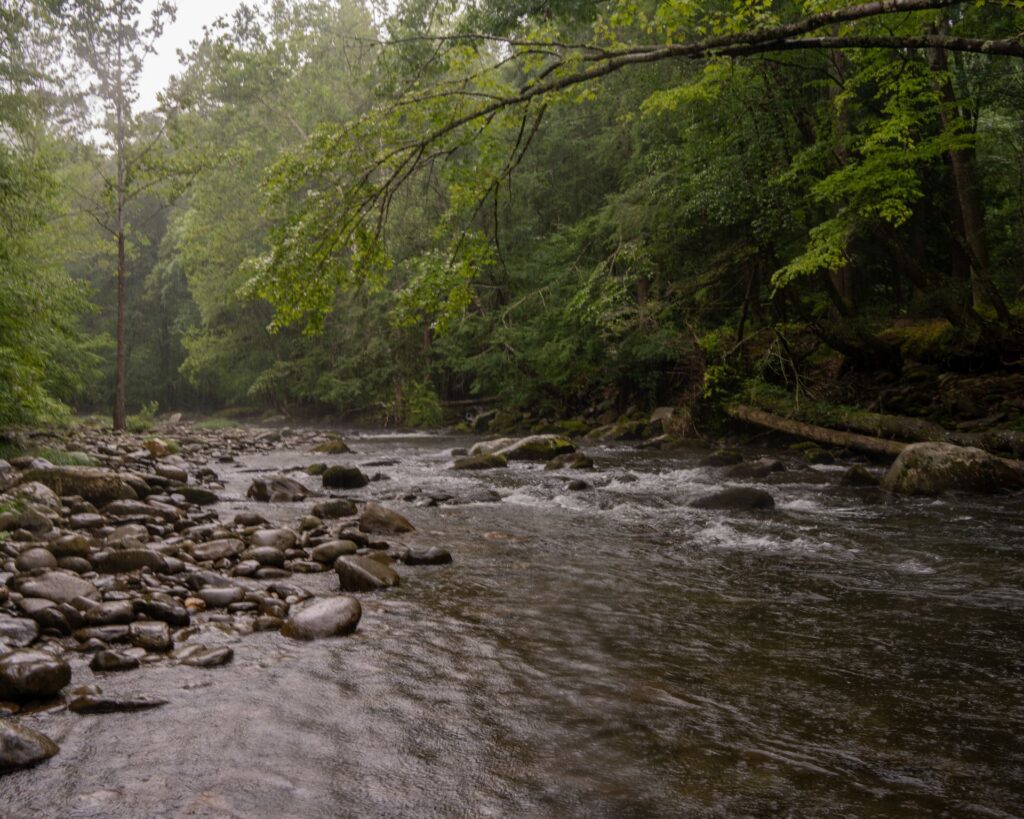
We had been lucky with air quality so far, but the smoke caught up with us in Mammoth, in central Kentucky between Louisville and Nashville, Tennessee. We realized something was off a mile into our hike when our lungs started to burn. We didn’t find out how bad the air quality had become until we finally had a phone signal back at the visitor center. All our phone alerts came through at once, and, as it turned out, the air quality index (AQI) had been close to 160 that morning. The EPA classifies AQI under 50 as “good”; 160 is in the “unhealthy” range.
The following day, as we made our way into the caves for a self-guided tour, the air felt better but was still hot. We were too distracted by the caves to worry about it. They are the largest known cave system in the world, with over 400 miles mapped, though only 9 miles were accessible as the rest can pose a hazard to tourists.
Mammoth and many other natural cave systems “breathe,” fully cycling out the cave air with outdoor air every 24 hours. In the summer the main entrance “exhales,” so a cool breeze emanates from the cave on sweltering days. And so the oppressive heat faded as we entered nature’s air conditioner from the Rotunda, a massive cavern near the cave system entrance. This one room alone was almost a quarter acre — cathedral-like and magnificent, giving us a sense of the scale of the cavern.
Tim Pinion has been chief of science and resource management at Mammoth since 2018, with climate change one of his main concerns. The cave system has a year-round constant temperature of 54 degrees Fahrenheit, which, not coincidentally, is the same as the average annual temperature in the national park.
“We know organisms that use the caves, like bats, have adapted to a very narrow temperature range,” said Pinion, “so we suspect that organisms in the cave probably have a low tolerance to changing temperatures … and in future scenarios where the average annual temperature gets warmer, we might see that cave ambient temperature start to creep up over time.”
Pinion points to the RAD strategy — resist, accept, direct — as a tool that many national parks use to decide how to manage different aspects of climate change.
One place the park has chosen to direct its efforts is managing fire. Tree rings reveal that understory fire was historically integral to East Coast ecology, and pollen records show Indigenous peoples used controlled burns in the region for about 4,000 years before modern America began to spring up a few hundred years ago.
“In 2019, we updated our fire management plan so that we could put prescribed fire back on the landscape,” Pinion said. The updated plan “identifies all these different burn units throughout the park” and prioritizes areas for prescribed burns. Now he just needs to find a window to schedule fires that won’t harm remaining bat populations.
Indiana Sand Dunes National Park
To the north at Indiana Sand Dunes National Park, Dan Plath, the chief of resource management, has his own prescribed burn scheduling woes. Plath was at the dunes, located at the southern tip of Lake Michigan, before it became a national park in 2019. He used to be able to reliably schedule prescribed burns in April.
In the past few years, however, early thaws and unseasonably warm days beginning in January and February have made finding days when burns won’t increase stress on the ecosystem incredibly difficult.
“Prescribed fire can actually have a negative effect on things like salamanders and turtles,” Plath said. “You want to burn when things are hibernating, not when they’re out running around, or you’re going to hurt the population.”
While Plath used to be able to reliably schedule fires for spring, they are being pushed further and further back into winter.
The RAD framework is built into the decision-making at Indiana Sand Dunes. But while Plath has plenty of options for resisting invasive species and directing the use of fire, he has been forced to accept that erosion is an inescapable consequence of less ice on the lakeshore to protect the dunes from winter storms.
Cuyahoga Valley National Park
The main effect of climate change in Cuyahoga Valley in northeastern Ohio is the increase and shift in the precipitation pattern. “The old saying that ‘April showers bring May flowers’ doesn’t seem to apply anymore. I can hardly remember a rain shower since I’ve been here,” said Chris Davis, a plant ecologist at Cuyahoga Valley National Park. “It’s basically all or nothing — pouring or not raining. I mean, we still get intermittent, short-lived ‘showers,’ but it’s usually a deluge.”
The Cuyahoga River, which travels in a U-shape for 85 miles before spilling into Lake Erie in Cleveland, does not have capacity, as it exists now, for increasingly erratic and extreme precipitation patterns. It isn’t “sized right,” Davis said. It needs additional meanders to increase the length. In industrial days it was channeled and straightened in places, making the river almost canyon-like, reminiscent of the dry glacial stream beds on the Ledges Hike. The NPS has partnered with the Army Corps of Engineers on a major restoration of the Cuyahoga River within the park.
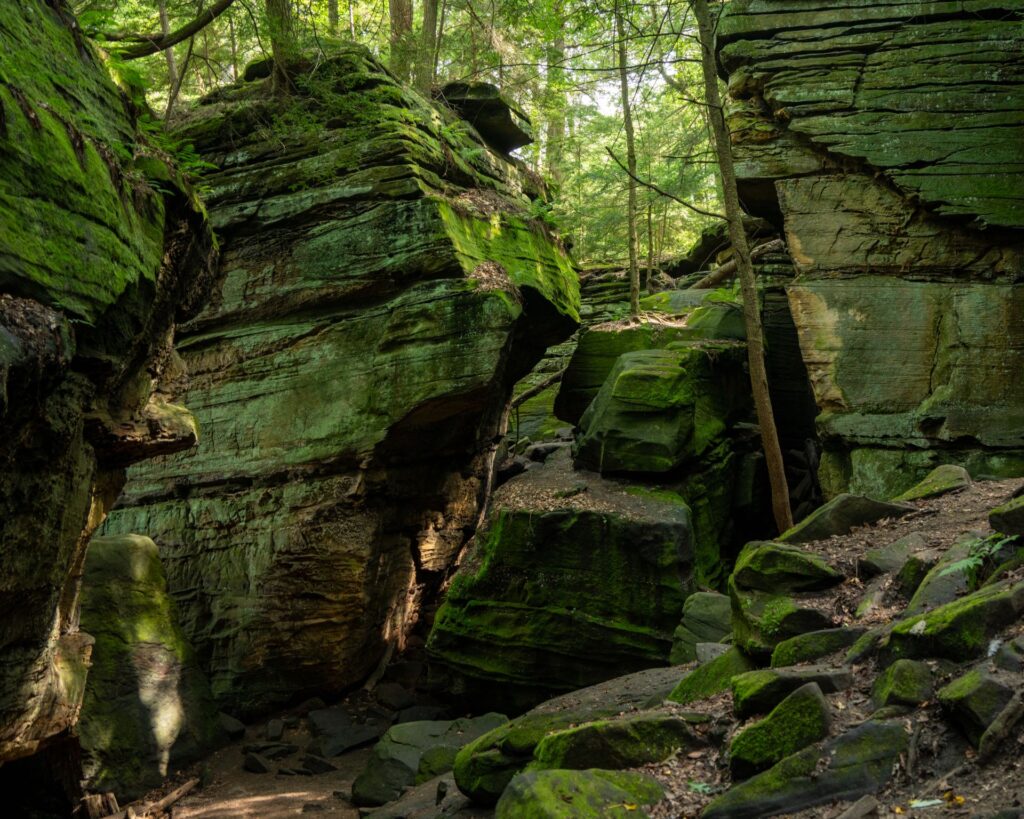
Because of various constraints, the park cannot bridge the gap between the size of the Cuyahoga River and the need for additional length. Davis said that the “current plan is to create one new bend in the river at a location where a longer meander was eliminated in the 1960s when a new bridge was built.”
This would restore that section of river to a semblance of its historic flow while also “addressing some of the effects associated with a changing climate.” However, Davis said that fulfillment of the plan would add only “about 45% of the length needed to stabilize the river” within the park.
Acadia National Park

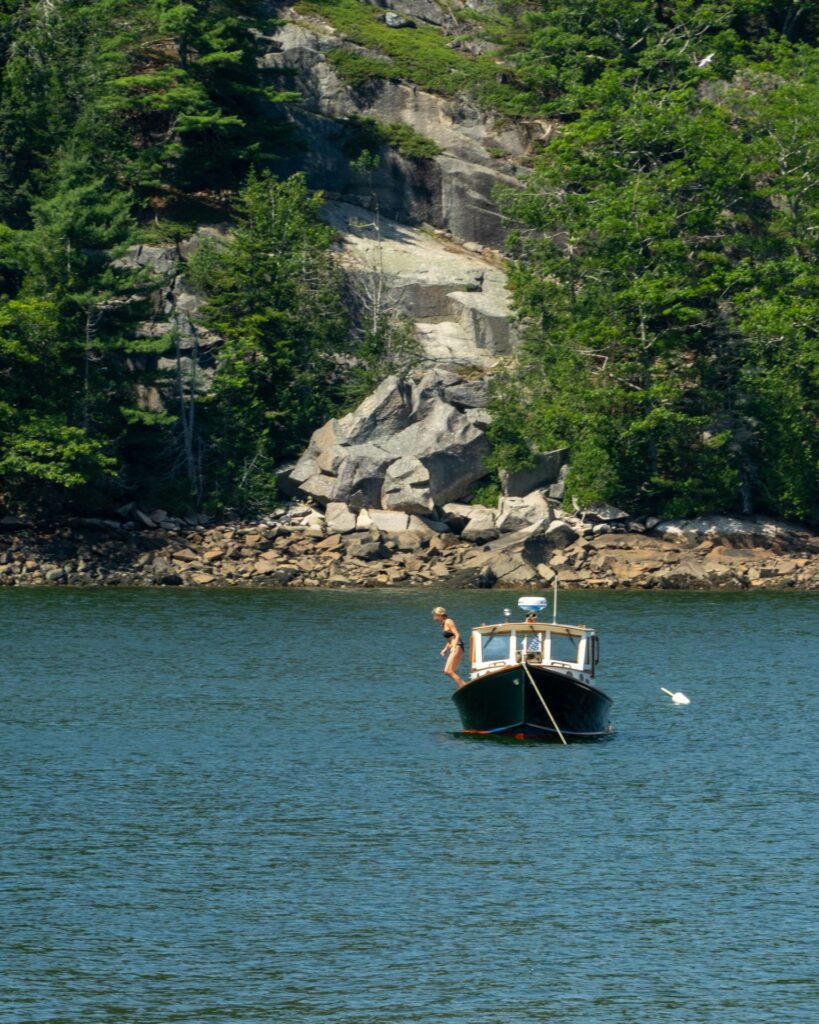
Finally I was back in Acadia, where I spent my childhood summers. The Acadia National Park is “a measurably different place” than it was a few generations ago. Of the native plants found on the island in the 19th century, one in six is already locally extinct, and the water is now warm enough to support toxic algae blooms. My family annually checked the lake temperature with a meat thermometer. When I was a child I remember it sometimes registering around 64 degrees. Though on average the water temperature in Maine lakes has risen by 3 degrees in the past 20 years, I was there on a particularly hot day and, when I dipped my thermometer into the lake, it registered 78 degrees.
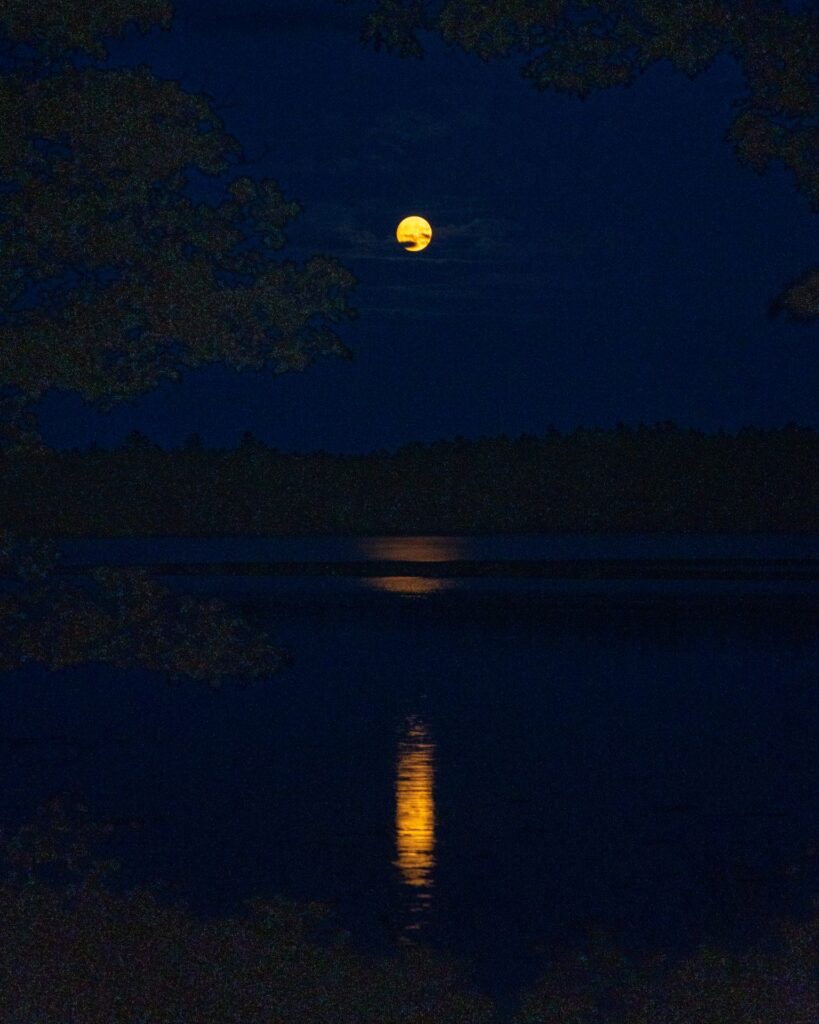
I got some sense of just how quickly things were changing when I recently met with Chris Nadeau, a climate change adaptation scientist from the Schoodic Institute who runs experiments in Acadia.
Nadeau, an energetic man with a knack for explaining science to the layperson, is currently coordinating the climate adaptations for the three major restoration projects underway in the park. He is tasked with integrating experimental approaches to restoration to test their effectiveness without delaying the desperately needed action.
“If we just picked one restoration strategy, and we did it everywhere on the landscape, and it failed, the entire thing would fail, right?” said Nadeau. “But if we do three things, and we do them in different plots, then we learn a lot from that. But also … if whatever treatment we put in that plot fails, but these two do well, then we’ve still successfully restored. So by doing multiple things in a scientific way, we’re learning but we’re also hedging our bets against failure.”
Nadeau knows that some areas of the park will be incontrovertibly transformed no matter what he does. Sea level rise is accelerating in the Gulf of Maine. “We’ve seen 8 inches of sea level rise since 1950” Nadeau said. “It took 50 years or something to get the first 6 inches of sea level rise, but now we expect to get another 6 inches just, like, by 2030.”
Nadeau wants to have as much information as possible when it comes time to decide what can and can’t be saved. “These strategies, a lot of them have never been tested. And so we need to be learning while we’re acting. … We don’t have time to wait before we act; we need to act now.”
Among the options are assisted migration and gene flow (transfer of genetic material from one population to another), both of which can be controversial. But these experiments are vital, said Nadeau, because “doing nothing is an option. But we need to deliberately choose that option, if that’s what we want.”

As we headed down Cadillac, outpacing an impending summer squall, I was struck by how different the view was from the day before when I took Caro to see the top of Cadillac Mountain, the highest point on the Atlantic coastline in the U.S. That clear morning, we could see all the way to Mount Katahdin, a three-hour drive north. Wind turbines lay scattered for miles around us, like tiny toothpicks in the distance, only visible with the help of my camera’s zoom lens.
The closer we got to Baltimore, the less we wanted to return to our “real lives.” It turns out that living out of the trunk of a Prius suited us just fine. The summer was winding down, and we had to get back to school and jobs. But we felt that we had done something grand. The future appeared less precarious now than it had when we were suffering the smoke from Canada’s wildfires, when we felt panicked and worried about the next catastrophe — another pandemic, a war, some infrastructure collapse or a billion-dollar natural disaster, to name a few of the possibilities.
Somewhere along the way we had come to understand that although the landscape we were so desperate to see had already been irrevocably changed, we appreciated it all the more.
Become a member today to receive access to all our paywalled essays and the best of New Lines delivered to your inbox through our newsletters.



